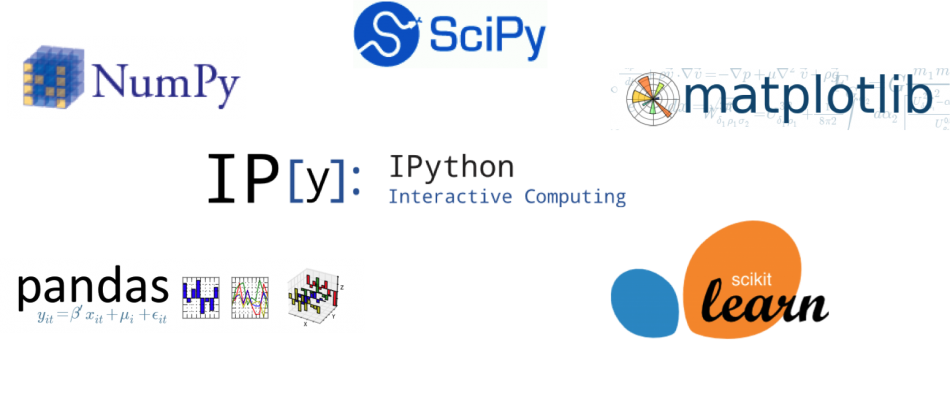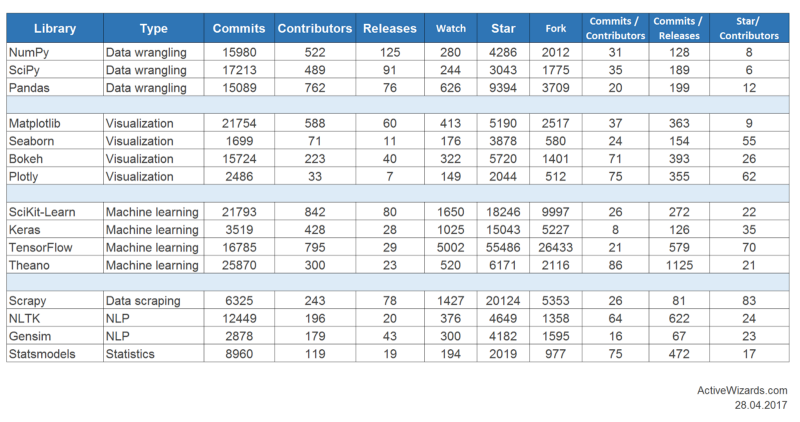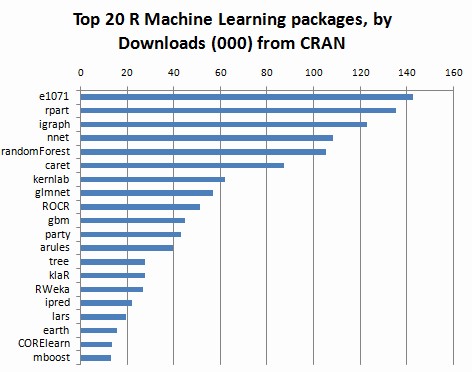In this article I am going to share some popular and best python machine learning libraries.
I will advise you to go through Introduction to Machine Learning article (an introductory blogpost) to get better insights as we move further.
Here we will be focusing on some of the cool packages and libraries that we can use during our project life cycle in Machine Learning.
Best Python Machine Learning Libraries
Guys, primarily we need to opt a language for our journey with ML from R & Python, so based on the public interest and keeping various other factors in mind we will be continuing our rest of the session with Python as a language.

Here we are going to discuss about some of the basic Python machine learning libraries and packages that some of you might have used during your projects and on the other hand some of the packages that are specific and beneficial for Machine Learning. So let’s start with discussing the importance of the packages and what functionalities do they have to offer.
NumPy
NumPy (stands for Numerical Python) is one of the most famous and commonly used python package among data scientists and ML engineers. This is a part of Python’s SciPy Stack, which is basically a collection of software specially designed for scientific computations. However the stack mentioned above is pretty vast. In this post we’ll focus on some of the essential libraries pertaining to python.
Talking about NumPy, it provides several features to work with n-dimensional arrays and matrices in python. This library provides vectorization of mathematical operations on the NumPy array type which adds up to the performance of the execution.
Pandas
The Pandas library is too a well-known library in the world of Analytics and Data Sciences. This package is primarily designed to work with simple and relational data. This is one of the favorite libraries among the data scientists for easy data manipulation, visualization as well as aggregation.
If talking about the data structures, there are basically two prime data structures available in the library which are Series (one-dimensional) & Data Frames ( two-dimensional) and we think these are not that significant to talk about as of now.
Let’s see some of the basic functionalities that Pandas has to offer:
- We can very easily delete as well as add a columns from DataFrame
- Pandas can be used to convert the Data Structures in to DataFrame objects.
- If we have any redundancy in the dataset in the form of missing data represented as ‘NaN’, this is the perfect tool to remove that
- Can be used for grouping of the attributes based strictly on their functionality.
SciPy
This is a SciPy library, do not get confused with SciPy Stack that we have mentioned earlier. SciPy is a library that contains modules for Liner Algebra, Statistics, Optimization & Integration. This fact cannot be denied that the main functionality of SciPy is built upon NumPy.
The purpose mentioned above like statistics, optimization is served by this library with the help of its specific sub-modules (in which the functions are well documented).
Note: These three libraries that we’ve mentioned above are the core libraries, i.e. they can be frequently used in the python programming as well as for highly specific tasks like Data Analysis and Machine Learning.
Let us now see some of the more great libraries that add up to the beauty of python when working with data.
Libraries for Data Visualization
- Matplotlib
- Seaborn
- Bokeh
- Plotly
These are the libraries that are frequently being used in Data Sciences preferably for data visualization. We do not need to explain them right now but will be using in the script whenever required.
Libraries for Machine Learning
- Scikit-Learn
- Keras
- Theano
- TensorFlow
Libraries for Natural Language Processing
- NLTK (Natural Language Toolkit)
- Gensim
Libraries for Data Mining & Statistics
- Scrapy
- Statsmodels
These are some of the most familiar machine learning libraries in python that are being preferred and used by the data scientists and engineers. You can also find some other packages/libraries useful depending on your needs.
Let’s see now what Github has to say for the use of different libraries throughout:

Bonus Tip: As some of our readers might be working on their ML projects with the help of R language. So here I am attaching a screenshot for them to choose a best performing package based on downloads.

Alright guys that is all for today. We hope you enjoyed learning with us. We will be coming with such articles on regular intervals. Stay tuned.
The post Best Python Machine Learning Libraries appeared first on The Crazy Programmer.
from The Crazy Programmer https://www.thecrazyprogrammer.com/2017/11/best-python-machine-learning-libraries.html
Comments
Post a Comment